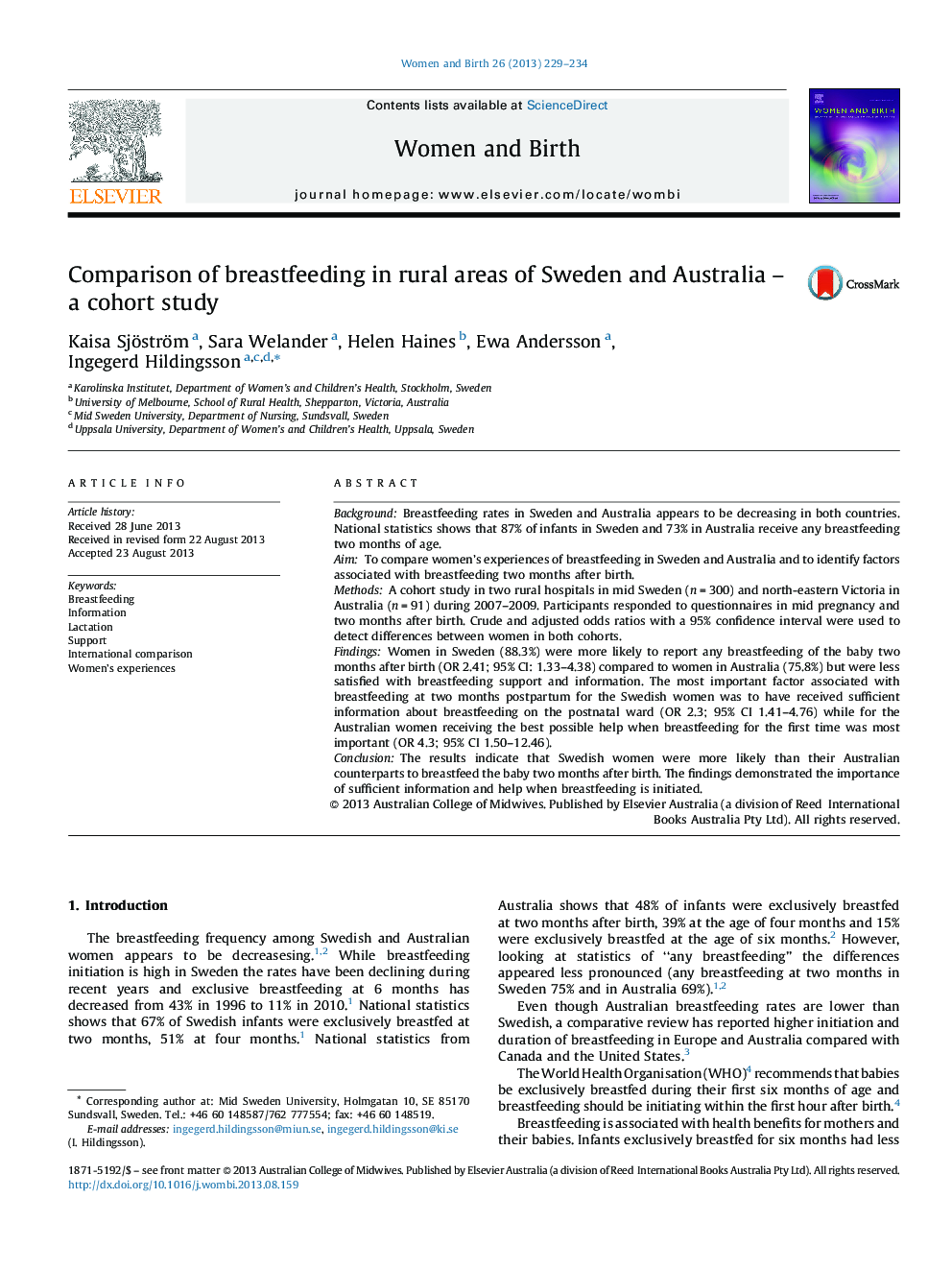| Article ID | Journal | Published Year | Pages | File Type |
|---|---|---|---|---|
| 2636146 | Women and Birth | 2013 | 6 Pages |
BackgroundBreastfeeding rates in Sweden and Australia appears to be decreasing in both countries. National statistics shows that 87% of infants in Sweden and 73% in Australia receive any breastfeeding two months of age.AimTo compare women's experiences of breastfeeding in Sweden and Australia and to identify factors associated with breastfeeding two months after birth.MethodsA cohort study in two rural hospitals in mid Sweden (n = 300) and north-eastern Victoria in Australia (n = 91) during 2007–2009. Participants responded to questionnaires in mid pregnancy and two months after birth. Crude and adjusted odds ratios with a 95% confidence interval were used to detect differences between women in both cohorts.FindingsWomen in Sweden (88.3%) were more likely to report any breastfeeding of the baby two months after birth (OR 2.41; 95% CI: 1.33–4.38) compared to women in Australia (75.8%) but were less satisfied with breastfeeding support and information. The most important factor associated with breastfeeding at two months postpartum for the Swedish women was to have received sufficient information about breastfeeding on the postnatal ward (OR 2.3; 95% CI 1.41–4.76) while for the Australian women receiving the best possible help when breastfeeding for the first time was most important (OR 4.3; 95% CI 1.50–12.46).ConclusionThe results indicate that Swedish women were more likely than their Australian counterparts to breastfeed the baby two months after birth. The findings demonstrated the importance of sufficient information and help when breastfeeding is initiated.
